I bet you’ve walked past countless homes with storm doors. You know, those extra doors that sit in front of the main entrance? Most people don’t give them much thought.
But here’s the thing: storm doors are working hard behind the scenes.
They’re not just decorative additions. These protective barriers serve multiple important functions that can save you money and hassle. From shielding your expensive front door to cutting energy costs, storm doors offer benefits that might surprise you.
In this guide, you’ll learn exactly what storm doors do and why they might be worth considering for your home. We’ll cover everything from basic functions to installation tips. By the end, you’ll know if a storm door makes sense for your situation.
Let’s start with the basics.
What Is a Storm Door?
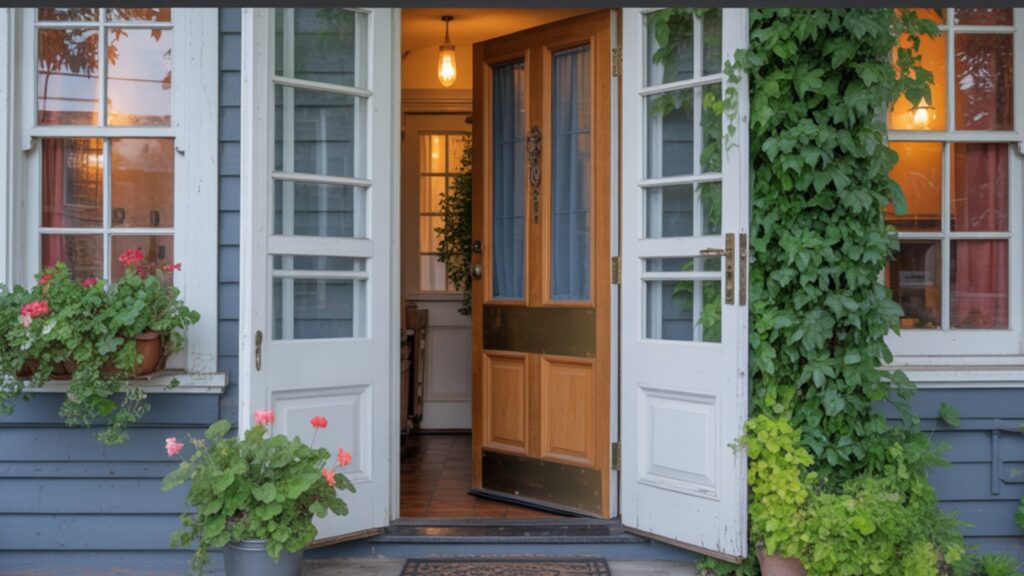
A storm door is an additional door installed outside your main entrance door. Think of it as a protective shield.
The basic construction is simple. Most storm doors have a frame that holds glass panels, screens, or both. The frame connects to your door opening with hinges and a handle.
Common materials include:
- Aluminum (lightweight and rust-resistant)
- Wood (traditional look but needs more upkeep)
- Vinyl (low maintenance and affordable)
Here’s what makes them different from regular doors: Storm doors are designed to be transparent or semi-transparent. They let light through while providing protection.
Your main door stays closed and locked. The storm door acts as the first line of defense against weather, insects, and unwanted visitors.
Most models let you switch between glass and screen panels depending on the season.
Main Purpose of a Storm Door
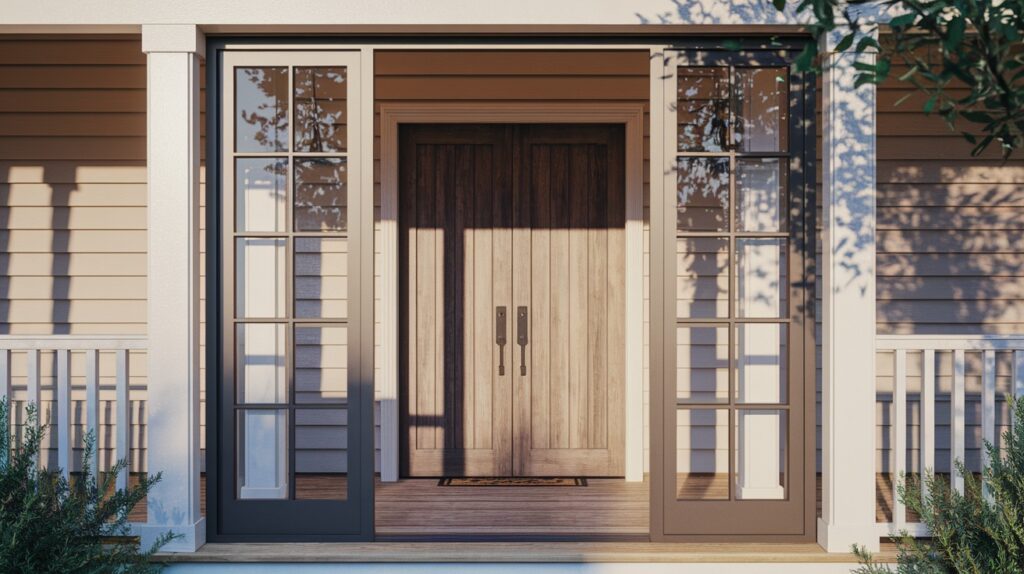
Storm doors serve five key functions that protect both your home and wallet.
Weather Protection: Your expensive front door takes a beating from rain, snow, and UV rays. A storm door absorbs this punishment instead. This extends your main door’s lifespan significantly.
Insulation Boost: The air gap between your main door and storm door creates extra insulation. This dead air space helps keep warm air in during winter and cool air in during summer.
Energy Efficiency: Better insulation means your heating and cooling systems work less. Many homeowners see noticeable drops in their energy bills after installation.
Security Enhancement: Storm doors add another barrier for intruders to get through. Many come with sturdy locks and reinforced frames.
You can open your main door for fresh air while keeping bugs out. The screen option lets air flow freely while maintaining security.
Types of Storm Doors

Not all storm doors look the same. Your choice depends on your style preferences and functional needs.
Full-View Storm Doors: These have glass from top to bottom with minimal frame interruption. They offer maximum light and visibility. Perfect if you want to show off your beautiful main door.
Mid-View Models: These feature glass on the upper half and decorative panels below. They provide privacy while still allowing light in. Great for homes with foot traffic or curious neighbors.
High-View Options: Similar to mid-view but with more glass area. The decorative section is smaller, usually just at the bottom.
Retractable Screen Features: Many modern storm doors include screens that roll up when not needed. No more storing separate storm panels in your garage.
Pros and cons vary:
- Full-view: Maximum light but less privacy
- Mid-view: Good balance, but blocks some visibility
- Retractable screens: Convenient but more expensive
Key Benefits of Installing a Storm Door
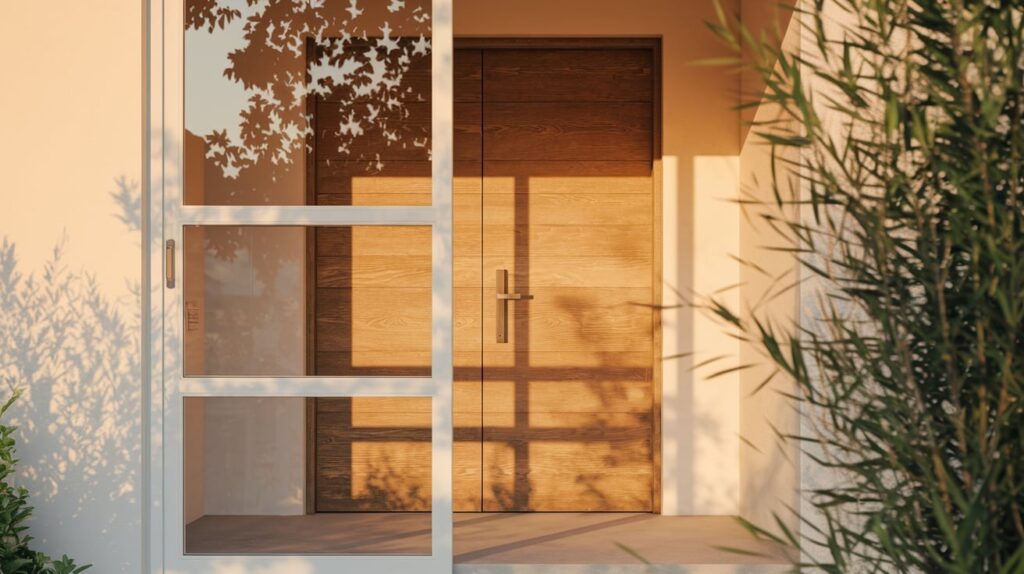
The advantages go beyond basic protection. Here’s what you gain:
Energy Savings The Department of Energy estimates storm doors can reduce energy loss by 10% or more. That translates to real money back in your pocket each month.
Door Longevity: Your main door will last years longer when protected from direct weather exposure. No more repainting or refinishing as often.
Seasonal Flexibility Switch between glass and screens as seasons change. Enjoy spring breezes without letting in flies and mosquitoes.
Curb Appeal: A well-chosen storm door enhances your home’s appearance. It can complement your existing architecture while adding visual interest.
Security Features Modern storm doors include multiple locking points, reinforced frames, and impact-resistant glass. Some even have smart lock compatibility.
Natural Light. Unlike solid doors, storm doors let sunlight brighten your entryway. This makes small spaces feel larger and more welcoming.
When Should You Consider Adding a Storm Door?
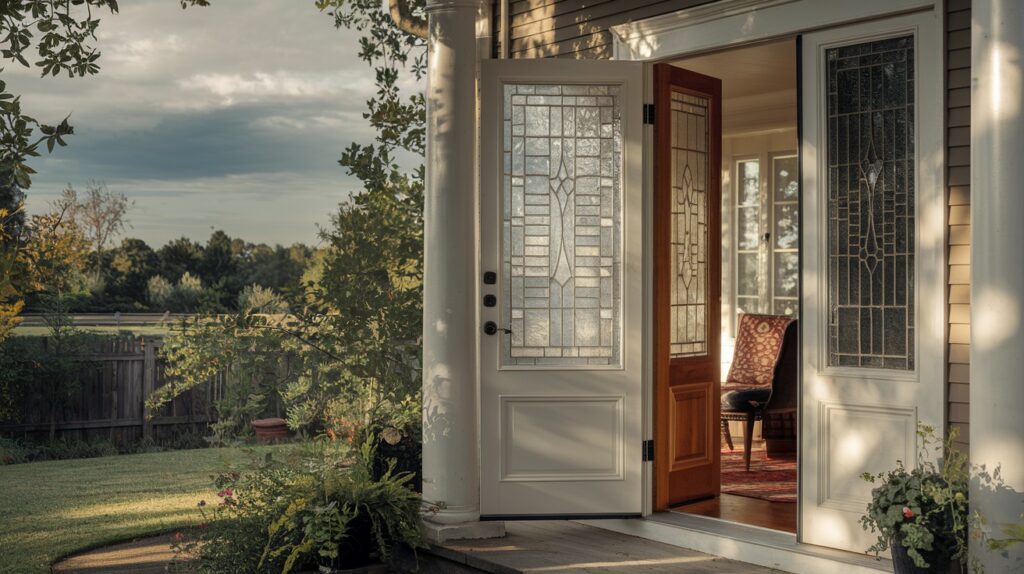
Storm doors aren’t right for every situation. Here’s when they make the most sense:
- If you live in areas with harsh winters or intense summer heat, storm doors provide valuable protection. They’re especially helpful in regions with frequent storms.
- Older doors benefit most from added protection. If your main door is showing wear or if replacement isn’t in your budget, a storm door extends its life.
- Homes with pets or small children often benefit from the extra security and ventilation options. Kids can play safely while you keep the main door open for air.
- Front doors facing south or west get punished by direct sunlight. UV rays fade finishes and warp wood over time.
- Areas with frequent rain, snow, or hailstorms see the biggest benefits. The storm door takes the hit instead of your expensive main door.
- If your heating or cooling bills are high, the extra insulation can provide meaningful savings.
DIY vs Professional Installation
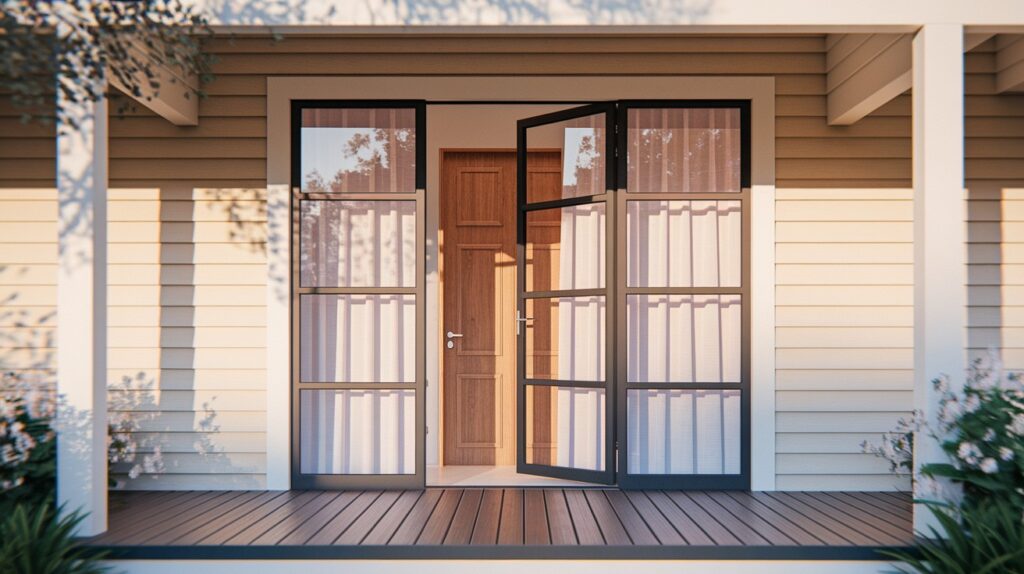
Installation costs vary widely based on your approach and local labor rates.
DIY Installation: Most homeowners with basic tool skills can handle installation. Expect to spend 2-4 hours on the project.
Cost breakdown:
- Door: $150-$400
- Hardware: Usually included
- Tools (if needed): $50-$100
Skills needed:
- Measuring accurately
- Using a drill
- Basic level and square knowledge
- Following instructions carefully
Professional Installation Hiring a pro costs more but guarantees proper fit and function.
Typical costs:
- Labor: $100-$300
- Total project: $250-$700
When to hire a professional:
- Your door frame isn’t the standard size
- You’re not comfortable with power tools
- The existing frame needs repairs
- You want warranty protection
Maintenance Tips for Storm Doors
- Clean glass panels monthly with standard glass cleaner and soft cloths
- Remove and wash screens with mild soap and water twice per year
- Check weatherstripping for cracks or gaps every season
- Lubricate hinges and locks annually with spray lubricant
- Tighten loose screws on handles and hinges as needed
- Test door alignment by watching how it closes and latches
- Replace worn weatherstripping every 3-5 years
- Check for rust spots on metal frames and touch up paint
- Inspect the glass for chips or cracks that could worsen
- Clear debris from door tracks and drainage holes regularly
Conclusion
Storm doors serve multiple valuable purposes that go far beyond simple weather protection. They insulate your home, reduce energy costs, extend your main door’s life, and provide security benefits.
The key is choosing the right type for your needs and climate. Full-view models maximize light, while mid-view options offer more privacy. Retractable screens add convenience for year-round use.
Installation is manageable for most DIY enthusiasts, though professional installation ensures proper fit. Regular maintenance keeps your investment working effectively for decades.
Take a close look at your current entryway setup. Does your main door face harsh weather? Are your energy bills higher than you’d like? A storm door might be exactly what your home needs.
Frequently Asked Questions
Do storm doors help with energy efficiency?
Yes! They create an insulating air gap that helps reduce heat loss and block drafts. The Department of Energy estimates energy savings of 10% or more in many homes. The savings are most noticeable in homes with older, less efficient main doors.
Can I install a storm door on any exterior door?
Most exterior doors can support one, but proper sizing and frame condition matter. Measure carefully and ensure your frame is square and structurally sound. Doors with unusual sizes or decorative features may need custom storm doors.
Are storm doors secure enough?
Modern storm doors come with multi-point locking systems and shatter-resistant glass. They add an extra security layer while maintaining visibility and light. Many insurance companies recognize storm doors as a security improvement that may qualify for discounts.
What’s the difference between a storm door and a screen door?
Storm doors are more durable and provide insulation with glass panels. Screen doors focus mainly on airflow and are typically lighter construction. Storm doors also offer year-round functionality with interchangeable glass and screen options.
How long does a storm door typically last?
With regular care, a storm door can last 15-25 years, depending on the material and usage. Aluminum models often outlast wood or vinyl options in harsh climates. Quality storm doors often come with warranties ranging from 5-10 years for added peace of mind.

